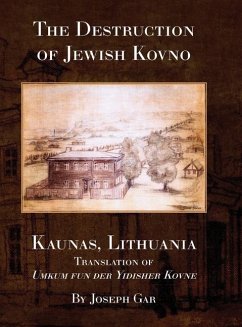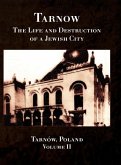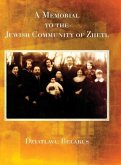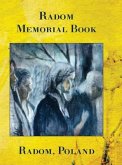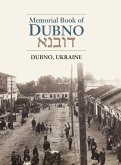The ghetto in Kovno has its own tragic place in history because of the cruelty of conditions there and the revolt of Jews towards the end of its days. The dire circumstances of the ghetto became more widely known after World War II with the discovery of secret archives, diaries, drawings, and photographs that had been buried in the ground when the ghetto was destroyed. These told the story of Jewish community's defiance, oppression, resistance, and death. Between 1920 and 1939, Kovno, located in central Lithuania, was the country's capital and largest city. From a small provincial city, it grew into a modern city, and became heir to the best traditions of the historically famous Lithuanian Jewry, with traditions from the nucleus of Jewishness, culture, learning, modern social-political movements, and people of Israel. Kovno had a Jewish population of approximately 32,000, about one-fourth of the city's total population, before the Germans and their Lithuanian auxiliaries began their systematic massacres in 1941. This book was written in the years just after the war and drew on interviews with Kovno survivors after their liberation, many of them in Displaced Persons camps. The Preface says that This is the first book laying out a detailed account of what happened in the Ghetto. At its peak, the ghetto held an estimated 29,000 people, most of whom were later sent to concentration and extermination camps or were shot after being rounded up and crowded into the notorious "9th Fort," one of several that had been constructed under the Russian Empire in the late nineteenth century for the defense of the city. The book describes the fort as one of the most horrible Nazi mass annihilation sites in Lithuania. Kovno was liberated by the Red Army on August 1, 1944. A few days later, little by little, the few miraculously surviving Jews started to return to the city. Everyone's first job was to run and see what the destruction of the Ghetto looked like. The images that they saw on the site of the former Ghetto were horrific. In the Ghetto not a single house was left intact. All the wooden houses were completely burned. The large, massive walls of the walled block of houses were lying in ruins, like after an earthquake. Throughout entire areas of the Ghetto the monstrous skeletons of dead and burned Jews were seen. One of the last chapters in the book ends this way: On the seventh day of mourning, we bow our heads in great awe to the scattered holy ashes of our murdered and burned men and women, from elderly to babies, we whisper the ancient Jewish prayer: "That their souls should be wrapped in bundles of life."

